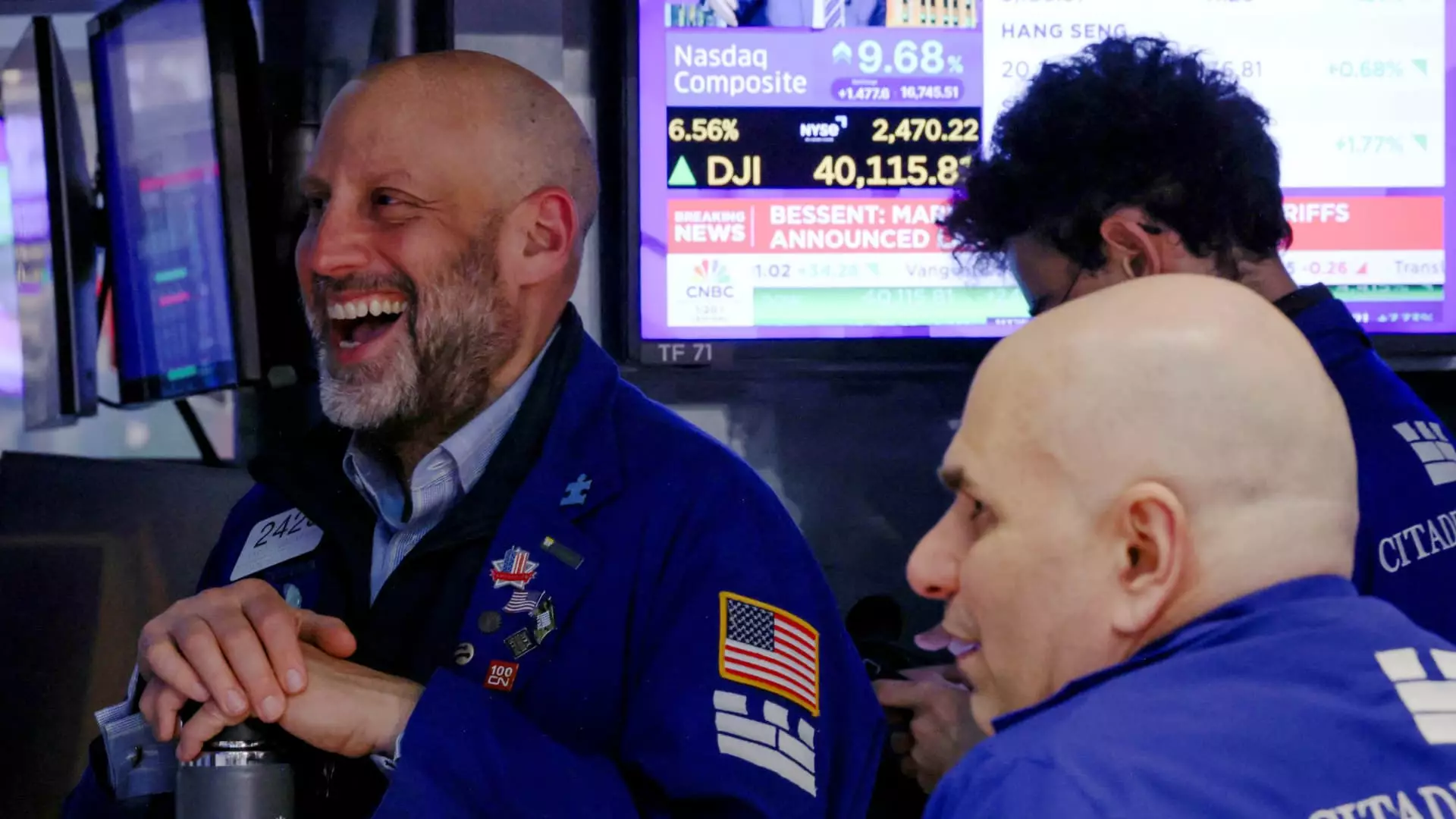On a day that could only be described as surreal, the financial landscape of the U.S. shifted dramatically as President Donald Trump announced a temporary hiatus in some of his “reciprocal” tariffs. This announcement, which promised a 90-day pause on certain tariffs at a lower baseline rate of 10%, sent shockwaves through a market that had recently faced its most daunting challenges in years. The Dow Jones Industrial Average skyrocketed by an impressive 3,028 points, marking an astonishing 8% gain—the largest since 2020. Such ferocious reactions raise a crucial question: Are we witnessing a market correction due to rational investor behavior, or simply a fleeting panic-induced rally governed by the whims of a volatile presidency?
It’s vital to understand that the current stock surge blurs the line between genuine economic recovery and a mere flash in the pan. The markets had been reeling under considerable pressure, shedding over 4,500 points in four days prior to Trump’s announcement. During this period, there was palpable anxiety amongst investors—an anxiety that had been exacerbated by ongoing tensions between the U.S. and China, which many believed could plunge the economy into a precarious state. The abrupt surge in stock prices, therefore, while exhilarating, serves more as a barometer of investor sentiment than a reflection of actual economic stability.
The Irony of Tariff Relief
As stocks of tech giants like Apple and Nvidia jumped 11% and 13% respectively, one must consider the irony of such positive market behaviors against a backdrop of heightened tariffs. Originally, these tariffs were meant to protect American interests and industries, but instead, they have become a game of political chess that leaves corporations, and by extension the public, in a state of uncertainty. This latest announcement only restates that tariffs on China will not just stay but significantly increase, now reaching a staggering 125%. Shouldn’t we be concerned?
Treasury Secretary Scott Bessent’s subsequent clarification that the reduced tariff rates would not apply to sector-specific tariffs adds another layer of complexity. While this might temporarily soothe the stormy waters for some businesses, it does little to mitigate the uncertainty that awaits the markets in just 90 days. The optimistic perspectives of financial analysts, like Adam Crisafulli from Vital Knowledge, can’t mask a simple truth: this is a ticking time bomb. The temporary state of relief feels suspiciously like a band-aid patching a wound that is still festering.
Market Euphoria or a Risky Gamble?
While the stock market’s meteoric rise on that Wednesday afternoon might inspire euphoria, we must approach such optimism with a discerning eye. Trump implored investors that it was a “great time to buy,” yet the reality remains far more nuanced. Analysts caution against the temptation to assume this surge signifies the end of a protracted downturn. Sam Stovall, CFRA’s chief investment strategist, aptly cautioned, “Fool me once, shame on you; fool me five times, shame on me.” What lies behind this phrase is a call to maintain vigilance over the alchemy of stocks and political decisions.
With Trump positioning himself within the public discourse as the herald of the market’s bounce back, one must ponder the sustainability of this growth. Is it merely a one-time blip or an authentic change in trajectory? Historical patterns reveal a cycle of booms followed by busts, often instigated by capricious policy changes or geopolitical strife—factors many investors seem remarkably willing to ignore in favor of short-term gains.
Perhaps the most telling aspect of this situation is not the market’s volatile jumps, but the underlying sentiment of fear that has driven investor behavior in recent weeks. Fear often distorts perception and leads to erratic decisions, making the current surge not an indicator of market strength but rather a reflection of the underlying fragility. In an environment ruled by unpredictability, trusting in the consistency of the market is a gamble only the bravest—or the most reckless—among us are willing to take.

